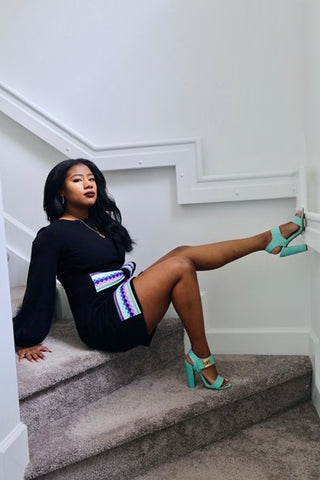Dr. Tomasina Chupco (29) is the founder and the owner of Indigenous Intentions, a cause-driven jewelry brand working to end the cultural erasure of Native Americans.
As a Seminole and African-American woman, Tomasina Chupco noticed that “there was a lack of funding for the prevention of missing and murdered indigenous women. After helping organize a march in D.C for this cause and connecting with other activists, she felt an even stronger need to help advocate. She described how she wanted “to get more involved with advocacy, especially once she discovered that human trafficking disproportionately affects Native American and black women.” According to a report from The Coalition to Stop Violence Against Native Women, Indigenous women are 10 times as likely to be victims of murder and sexual crimes, especially by individuals who are not apart of the Native American community.Tomasina says, “This disproportionality is because of the lack of value placed on people of color. A large reason why cases are not reported is because of the systemic racism within the justice system.”

Tomasina deeply believes women and children of color who have been kidnapped are seen as “lost” rather than “missing” by society. More simply, these missing women are seen as forgotten and in the past. They are not accounted for or seen as a loss by society. She states, “As for indigenous young girls who are victims of violent crimes and kidnappings, society does not always feel like they are important. We all live in different worlds, and that’s why we need to raise awareness. Indigenous Intentions was created to raise awareness among non-indigenous people about issues going on in our community. Moreover, it was created as a way for people to give back.” Tomasina also originated Indigenous Intentions in order to reclaim Native American fashion for indigenous people.

“I put statements on the jewelry like “decolonize” and “indigenize.” Indigenous Intentions also exist to teach others about what the sacred symbols on jewelry and clothing mean to different tribes. Therefore, when companies appropriate them, people will think twice about purchasing the product. Instead, now consumers can have the option to buy from a Native business and to mindfully share the culture. My brand is very intention-based. With Indigenous Intentions, you get to buy from a Native business, not from corporations who mock Native American regalia. When you buy from Indigenous Intentions jewelry, you invest into indigenous communities. You are helping economically empower our culture. It is very natural for children in indigenous communities to learn crafts like beadwork. Growing up, my grandmother taught me how to bead and sew. Also, 10% of proceeds on our “missing, and murdered indigenous women” collection goes towards foundations helping to spread awareness and stop the disproportionate rates of indigenous women in human trafficking.”

She continues, “Indigenous Intentions is helping stop both the cultural erasure of Native Americans and to commemorate the memory of missing indigenous women. Matoaka or Pochahontas was the first reported missing indigenous women in history. Watching the Disney story and knowing the truth got me thinking - are our stories really rewritten in this way? Likewise, Indigenous Intentions was created to expose these false narratives and to help indigenous people reclaim their own culture, their own experiences, and their own narratives.” Tomasina proclaims, “I’m Seminole, and my tribe was one of the only tribes that didn’t sign a treaty. So, fighting for my culture and for my people is in my blood.”
If you would like to join Tomasina’s mission, click here.

